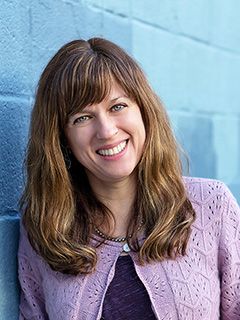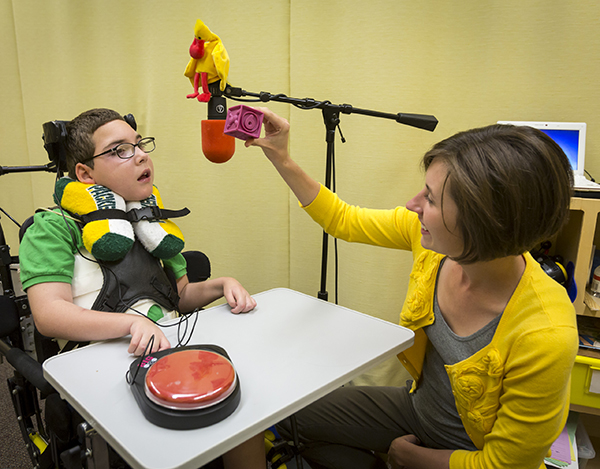2000 New Investigators Research Grant, 2005 New Century Scholars Research Grant
A New Focus

Learning to communicate is one of the most magical things about being a child. With the ability to connect and share ideas with the people around you, the possibilities of the world begin to open.
But Cerebral Palsy (CP) is the most common cause of childhood motor impairment, and 60-80 percent of children with CP have some kind of communication disorder. Having difficulty communicating can make their lives in school and on the playground more difficult, and can stunt their growth during one of the most formative periods of their lives.
Despite CP’s effects on children’s communication and development, the vast majority of contemporary research on people with CP has focused on adults. Katie Hustad has been working to change this.
Katie, who is professor and chair of Communication Sciences and Disorders at the University of Wisconsin-Madison, has spent her career studying communication in people with Cerebral Palsy. Her earliest work examined adults with CP and how speech supplementation strategies can improve the intelligibility of their speech.
Shortly after completing her PhD, as a new assistant professor in 2000, she received her very first award—an ASHFoundation New Investigator Research Grant. That ASHF support allowed Katie to expand her promising dissertation work, and conduct a small intervention study with adults who struggled with CP.

“That award was really significant validation,” Katie remembers. “I remember Margaret Rogers, whom I had never met before and who had no vested interest in my success, approaching me out of the blue at an ASHA Convention and being really enthusiastic and encouraging about my project. And I had one of those moments where you think to yourself, ‘Hmm, maybe I really can do this research career thing!’”
That ASHF New Investigators Research Grant also equipped her to attract new resources—providing pilot data for a larger study that was supported by an R03 grant from the National Institutes of Health two years later. And in 2005 Katie received an ASHFoundation New Century Scholars Award to explore how prosody affects speech intelligibility in adults with CP and develop innovative interventions to help them communicate.
Around the same time, Katie was inspired to chart a new path—and began shifting the focus of her research to the development of speech, language, and communication in children with Cerebral Palsy. “Children are so much more malleable than adults,” she says. “To try to change long-term outcomes, it made more sense to address communication development and intervention at the earliest possible age.”
Katie sought a K23 award from NIH to learn about speech development and measurement in children and in longitudinal research methods. Her results led to an R01 that is currently beginning its ninth year. This work has involved tracking a group of 100 children with CP to understand patterns of change in speech, language, and communication and to begin to understand which variables predict later communication abilities.
Katie’s ongoing study is the only known prospective longitudinal study of communication development in children with CP in the world.
Reflecting on the potential of her innovative work to change people’s lives, Katie says, “What we learn from these children will help us advocate for and develop speech and language therapies that can change the course of development and improve quality of life and the ability to communicate for people with CP.”
And she recognizes the role the ASHFoundation played in giving her the early support that sparked her research. “My work wouldn’t be where it is today without the early support of the ASHFoundation.”
Meanwhile, Katie is also examining innovative speech interventions to improve intelligibility in older children with CP. And she will be beginning to collect data for a second R01 to create benchmarks and age-based standards for the development of speech rate and speech intelligibility in children in order to develop diagnostic tools to help clinicians identify pediatric dysarthria at the earliest possible age.
So make sure to check back in a little while. There’s a lot more that Katie is aiming to discover.
View More Recipient Spotlights